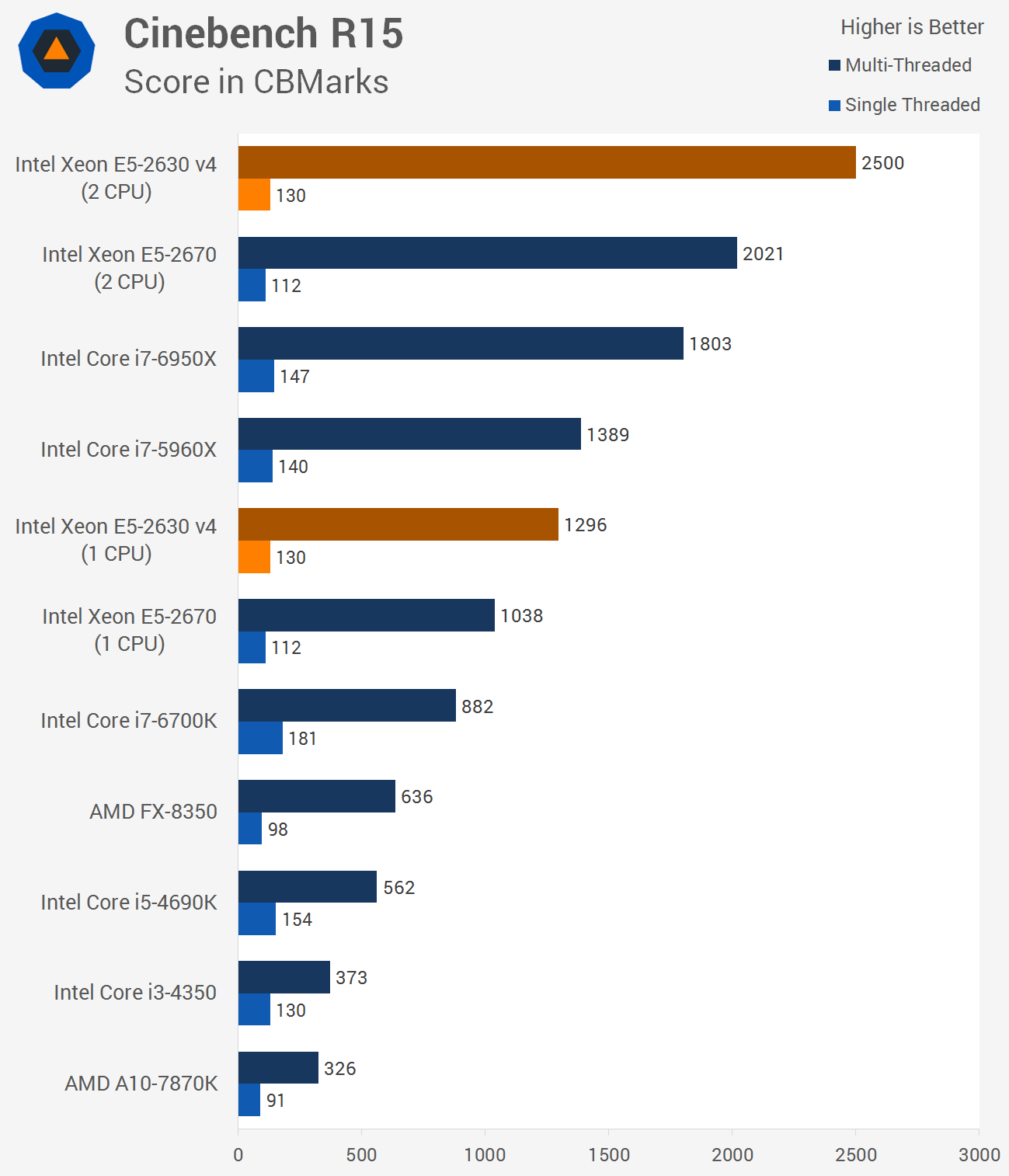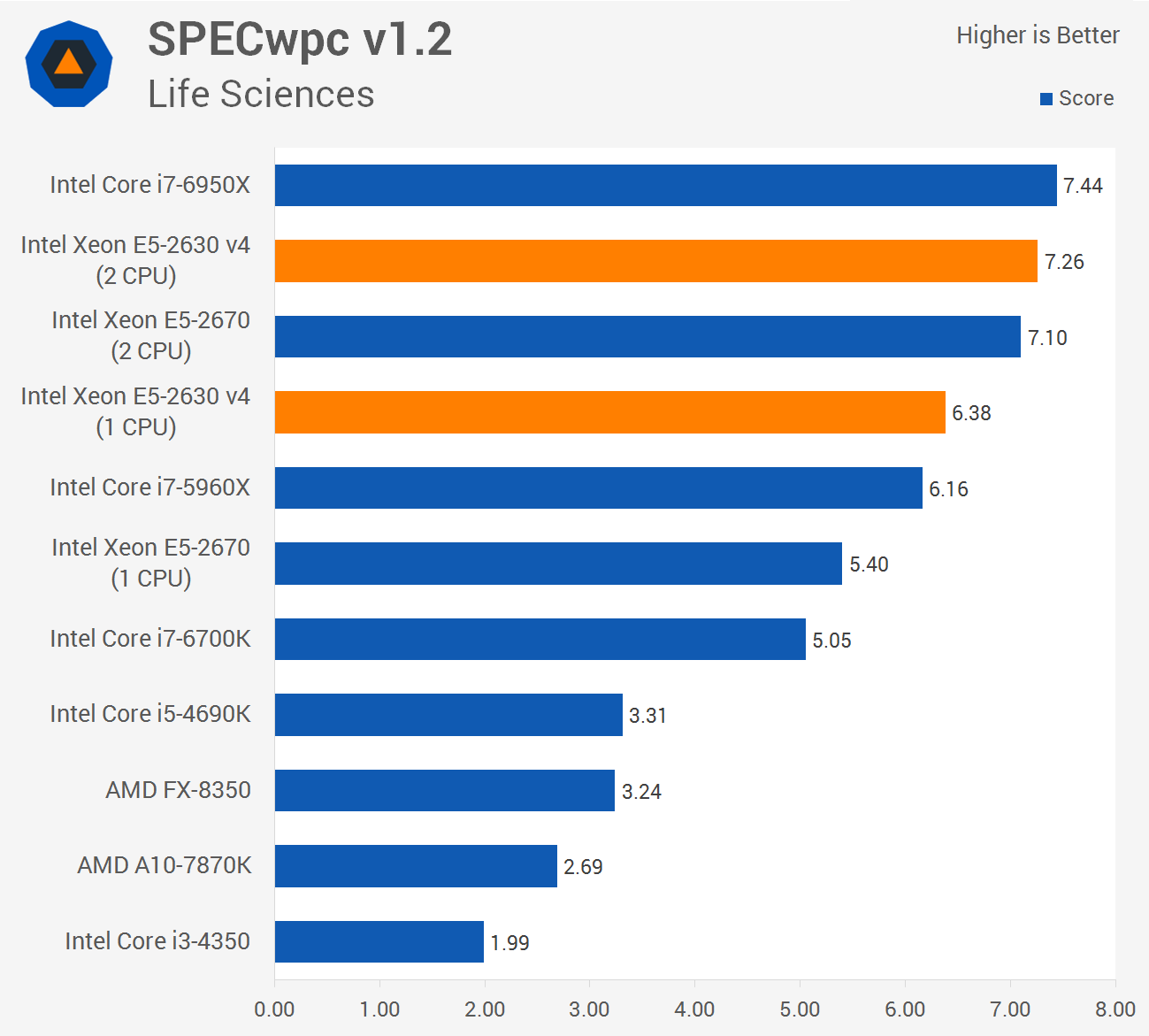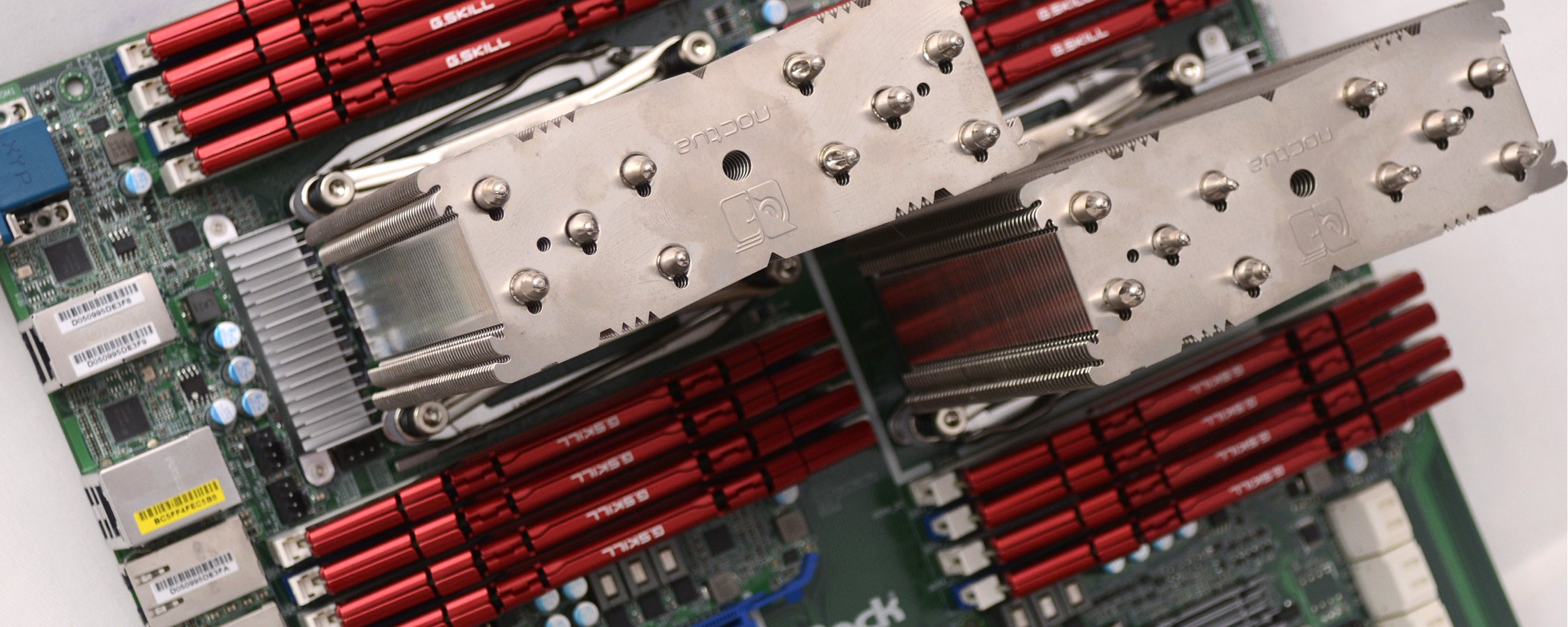Synthetic Performance

Cinebench R15 is a great benchmark for measuring raw CPU performance and here we see just how much power the dual Broadwell-EP processors have under the hood. The multi-threaded score of 2500pts meant that the E5-2630 v4 processors provided 24% more power than the dual E5-2670s. They also outscored the Core i7-6950X by a massive 39% margin. The single threaded score of 130pts wasn't bad either despite being 12% slower than the 6950X.

The Xeon E5-2630 v4 processors delivered our highest 3D Particle Movement score yet with 2271pts. That made them 11% faster than the E5-2670's and 40% faster than the 6950X. Again the single threaded score was also very respectable.

The SPECwpc product development test includes workloads from applications such as SolidWorks, Autodesk Showcase, Siemens NX, and Catia. Not all the tests are able to fully leverage the dual Xeon E5-2630 v4 processors and as a result they delivered a similar score to that of the 6950X.

The Life Sciences work loads were again not fully able to utilize the dual E5-2630 v4 processors and as a result they were slower than the 6950X.

Here we see the maximum possible performance gain when adding a second Xeon processor, as the initial score with a single processor is boosted by 100%. The dual Xeon setup delivered an impressive score of 7.98pts, or 42% faster than the 6950X.
